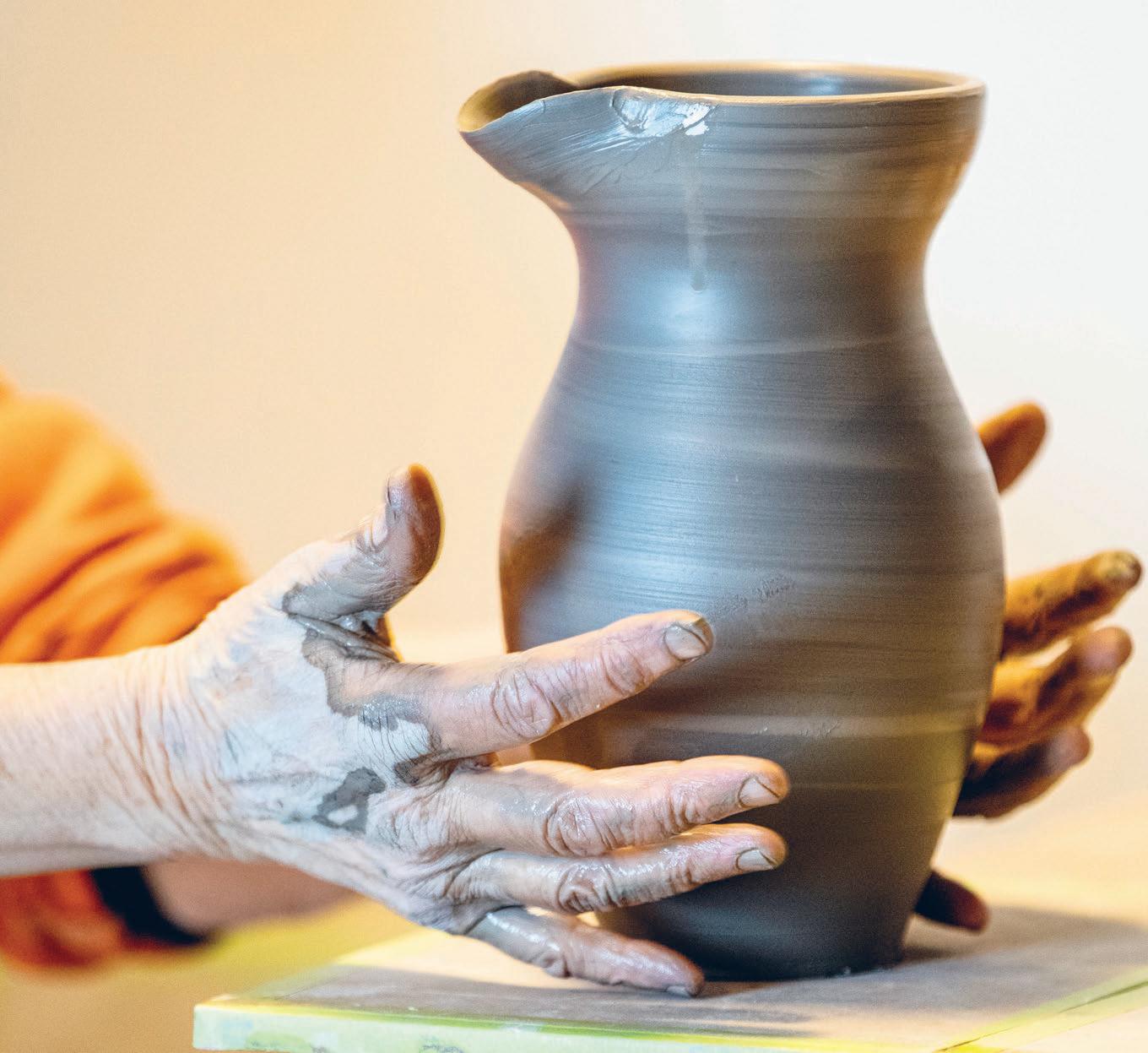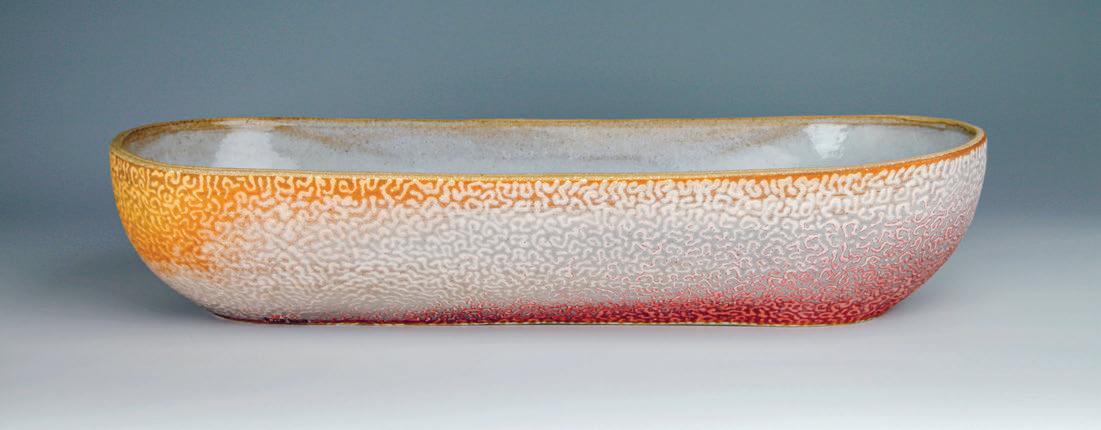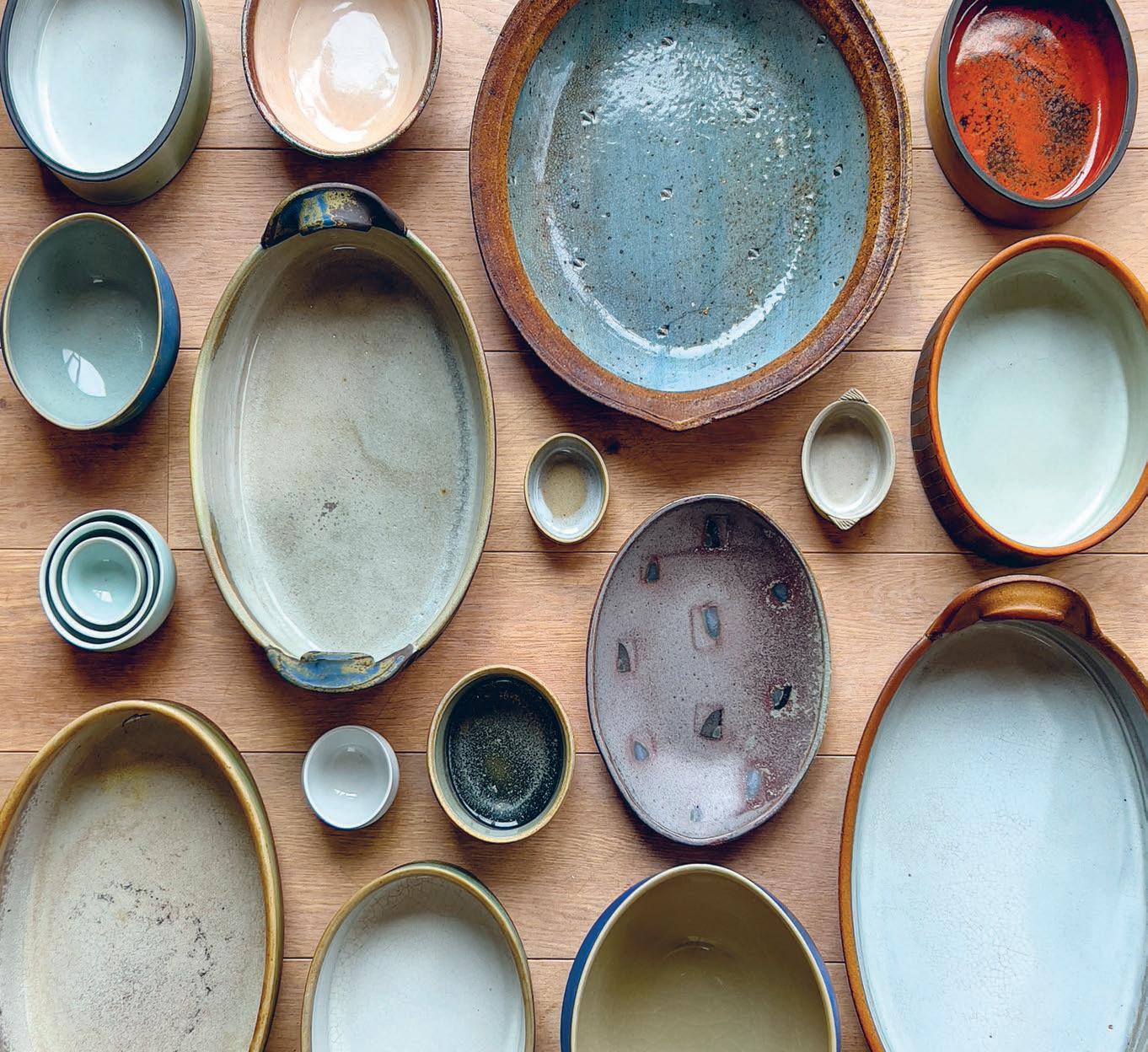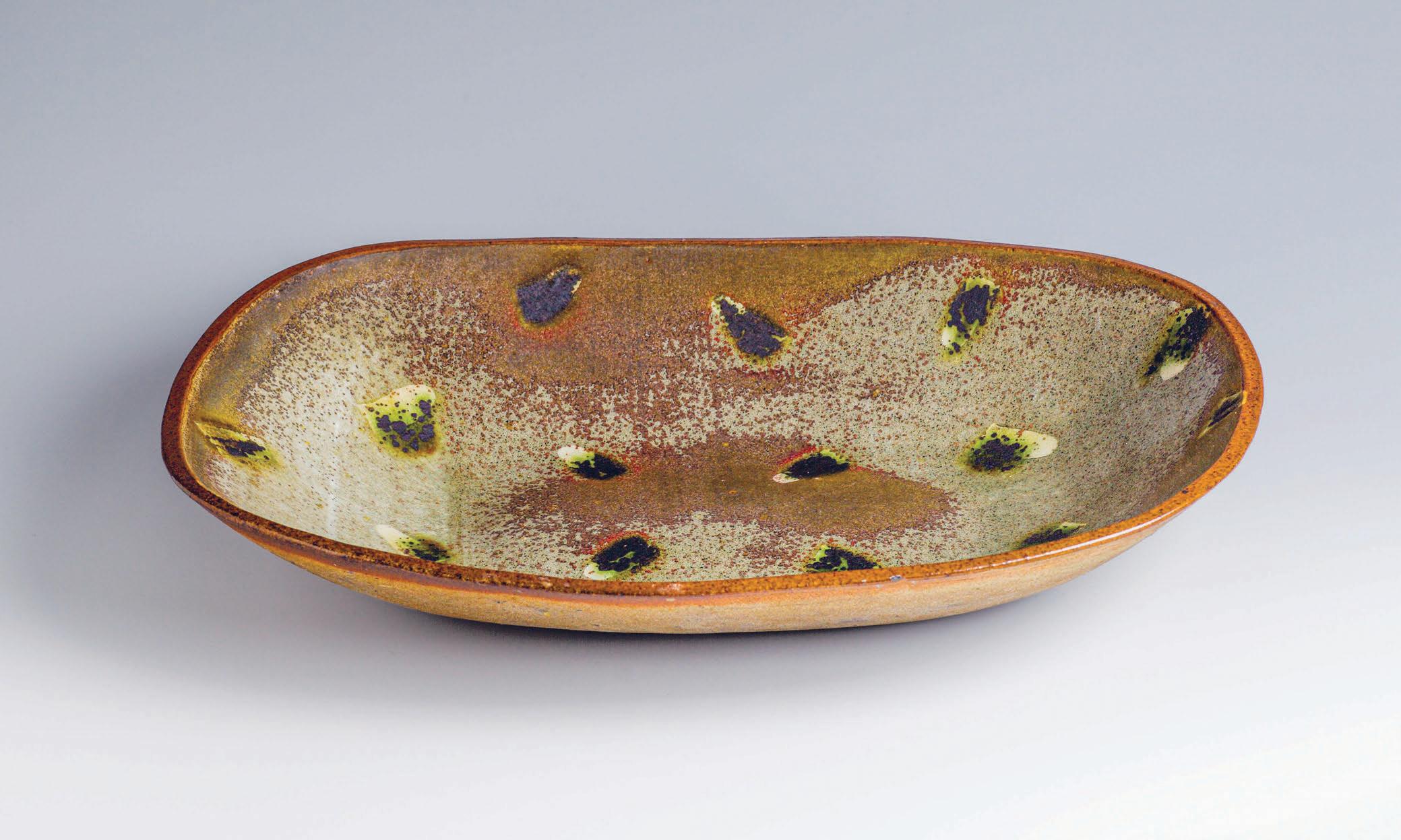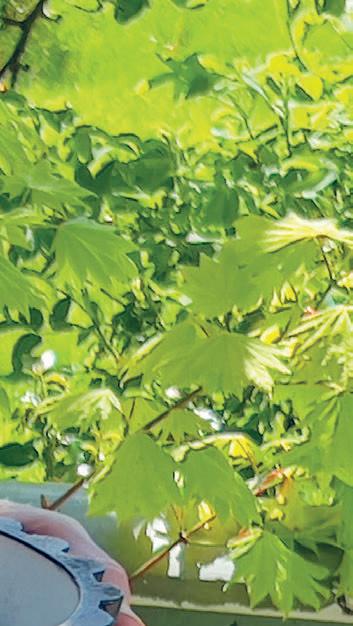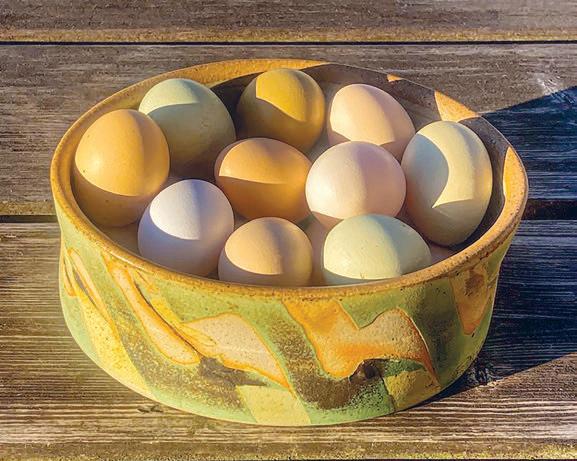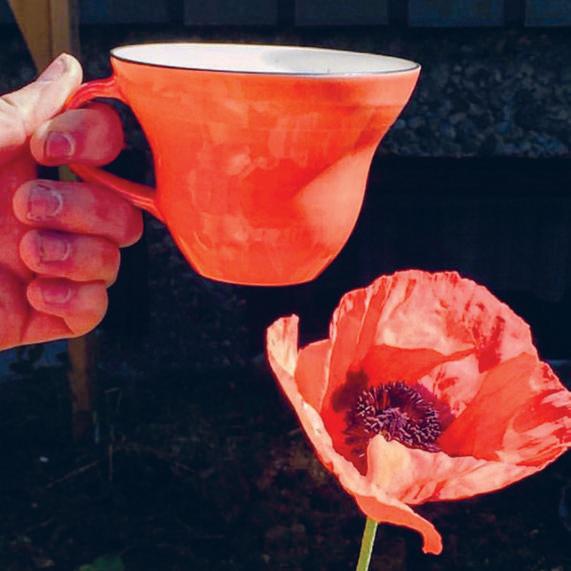


PLATTERS AND BOWLS
Over the years, Helland-Hansen has added new forms. In June 1996, she presented six large, deep, thin-walled bowls at Kunstnerforbundet in Oslo. Narrow at the base and wide at the top, they showed a lively interplay of form, color, and decor, height and width, outside and inside, and radiated both dynamism and serenity. “Elisa Helland-Hansen has pushed her own boundaries with the large ceramic works in this exhibition,” wrote the critic Anne Schäffer.15 The work that stood out the most was inspired by ice breaking on the fjord in spring. The white glaze had cracked and crazed to the extent that small pieces had broken loose and either fallen off or jutted up from the surface. This piece was later purchased by the Röhsska Museum in Gothenburg.
One notable quality of Helland-Hansen’s production is continuity. Where changes have occurred, they have generally been the result of new firing methods. For example, all the works in her 2009 exhibition at Kunstnerforbundet were fired in an electric kiln. This show was one of many joint shows that she has had since 1991 with her sister, the textile artist Ida Helland-Hansen. Apart from their family background, the two share a similar approach to color and ornamentation. For this exhibition, they took as a point of departure an image of a tree embroidered by their grandmother. To create a lattice of interweaving branches, Helland-Hansen pressed stencils cut from cardboard into slabs of porcelain, which she then formed into shallow bowls in three different sizes. If you look carefully, on another of the dishes you notice the name Obama and the date 20.01.2009 hidden in the swirling pattern, commemorating the day he was inaugurated as the first Black president of the United States.
In recent years, the meal as a ritual and link between ceramics and food has grown even more important to her. Since moving to Rosendal, where in 2012 she built a new studio at Seimsfoss, she has devoted increasing attention to gardening and foraging. Her studio output has been expanded with the addition of generous
15 Anne Schäffer, “Søstre i kunsten,” Kunsthåndverk no. 63 (1996:4), p. 40.
Winter II, bowl, 1996, wood-fired stoneware. 37 × 55 cm. Collection of the Röhsska Museum of Design and Craft, Gothenburg, Sweden





